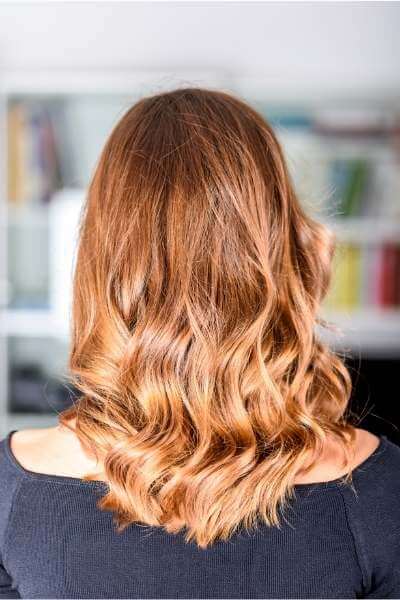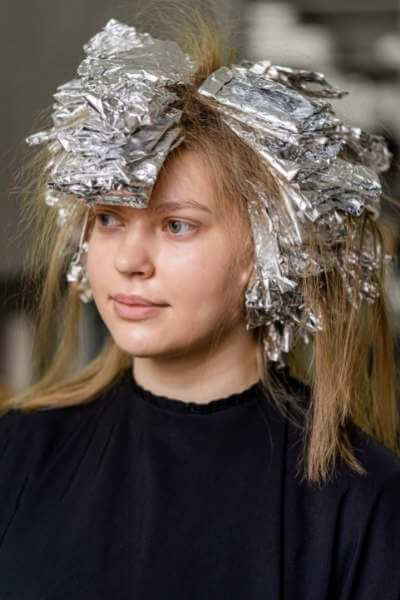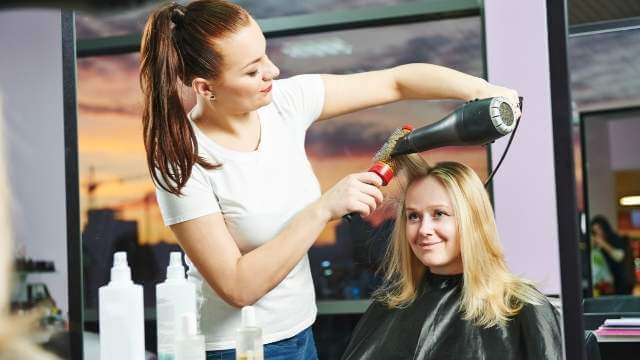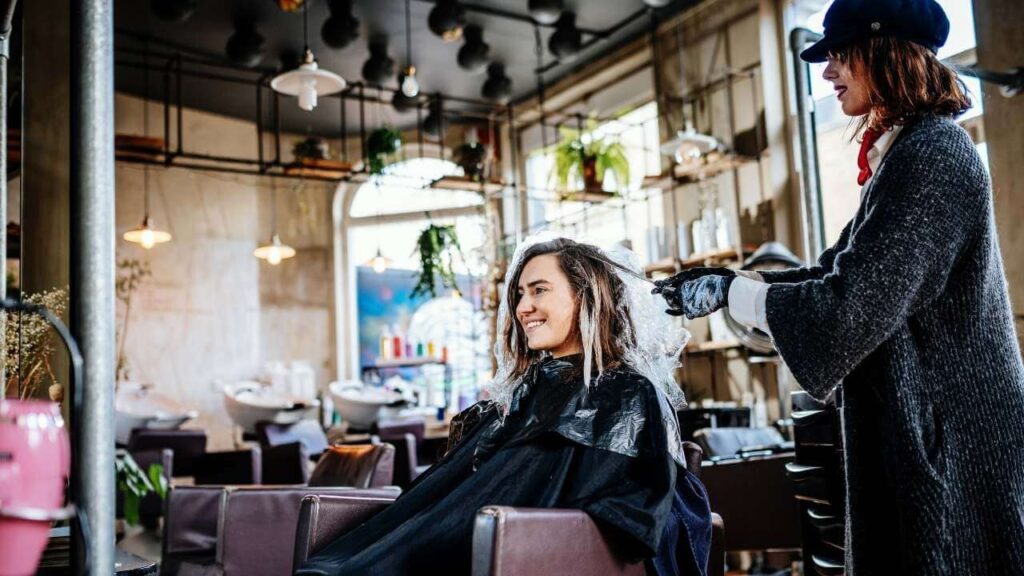Balayage isn’t the same for everyone and doesn’t look the same for everyone. Before you book your appointment below are a few of the things to know before you Balayage your virgin hair.
Table of Contents
Things to Know Before you Balayage your Virgin Hair
Balayage has become one of the most sought-after hairstyles in salons all over the world. While balayage has been increasingly popular in recent years, the hair dying method has been around for a long time and has only lately made its way into modern hair salons. Hairstylists have mastered the art of balayage throughout the years, and some have even made a reputation for themselves as a result of their balayage technique and experience. It’s safe to say that balayage hair is here to stay, as celebrities and supermodels alike flaunt their sunkissed, softly melting hair color.

Is Balayage suitable for you?
Except for very short or cut hair, Balayage works on all hair lengths. It works on light and dark hair, as well as all hair textures, depending on how light you want to go. You can request balayage into blonde, balayage for brown hair, or balayage for dark hair, and your colorist will customize the look for you. Whether your hair is straight, wavy, or curly, the color may work well and look fantastic.
When looking for your target photo, make sure it’s one with your hair done the way you usually do. Bring in a curled photo to your hairdresser if you wear your hair straight most of the time.
Balayage looks great on curly hair, but not so much on straight hair. Curling the hair mixes the hues and marries them together, allowing for flashes of dimension to show through. When the hair is straight, though, every detail is seen, and the appearance is somewhat more aggressive.
This isn’t always a terrible thing, especially when done correctly, but it’s critical that you understand what you’re asking for.
What is the process for Balayage?
Balayage is applied to the surface of the hair strands and isn’t fully saturated until the very tips. This results in a color stroke that is smooth and blended. Because no foil or meche is required to produce the highlights, it’s also known as a freehand method.

Balayage or Foilayage?
Depending on the style you want to create, both procedures provide distinct but equally stunning results. Balayage often offers lesser amounts of lift, whereas foils and smaller portions typically provide the highest level of lift. You may even combine the two approaches to create a unique appearance.
Check the article on Balayage vs Foilyage vs Ombre: Pros, Cons and What’s Best
Balayage Maintenance
Because it grows out gracefully and has no strong regrowth lines, balayage usually requires considerably less care than conventional colour. It also allows you to wait longer between visits, making it the ideal approach for today’s busy lady.
If you want your balayage to stay as long as possible, go for a babylight because it’s the mildest color available.
It’s also a good idea to invest in some high-quality colour care styling products to keep your colour looking fresh for longer. Take a look at hair toners or one of the finest purple shampoos, for example.
If your colour starts to seem brassy after a time, you may ‘refresh it without having to do a full top-up with a toner or gloss to restore the shine.
Balayage and Hair Damage
It’s crucial to understand that any hair colouring, especially when going lighter, may be harmful.
Balayage, on the other hand, is kinder on your hair than standard highlights since it doesn’t provide as much lift.
If your hair is already damaged, it’s important to follow your stylist’s advice rather than risk making matters worse.
To keep their hair in good colouring condition, I usually advise all of my clients to utilise a conditioning treatment once a week.
Balayage vs Highlights
Balayage is a highlighting technique. The balayage technique, as previously said, concentrates the colour a few inches from the roots. Traditional highlights, on the other hand, are generally applied straight to the roots. Traditional highlights also need some teasing, or backcombing, of the hair as well as a complete application of lightener on the shaft.
Traditional highlights are less dimensional and mixed throughout the shaft, whereas balayage highlights are more dimensional and blended throughout the shaft.
Another significant distinction is that balayage simply colours the top layer of hair to produce a sun-kissed appearance. Whereas colour penetrates straight through the hair with conventional highlights, due to heat from the foils and the natural heat from your scalp, creating a bolder effect.
How long does balayage last?
The nicest part about balayage is that because it’s painted on the hair so organically, it still looks fantastic as it grows out. Because the colour in a balayage treatment is generally focused from the mid-shaft to the ends, you may grow your hair out without having to worry about strong lines of demarcation or visible differences at the roots. Because the colour is so far away from your roots, it already seems to be perfectly grown out.
You may need to get your highlights boosted every three months if you want them to stay vivid. The common opinion is that balayage touch-ups should be done once or twice a year. Between sessions, experts recommend keeping hair healthy by getting frequent haircuts, deep conditioning treatments, and glosses.

How can you tell if your balayage process was done properly?
Because balayage is a specialty method, it’s crucial to seek out a professional hair colourist with experience and expertise in this field. Hair colorists should use the appropriate products for the color you want to obtain as well as your hair type, and they should know when to rinse the hair. If the hair is rinsed too soon, it may not lift properly, resulting in a brassy orange colour. If the colour is not applied and put properly, though, you may end up with uneven balayage.
Balayage’s major objective is to achieve a smooth, subtle, and seamless mix. As a result, coloured parts should be close together and soft at the root, thickening toward the end for a natural look, and darker portions should be left throughout the ends for that natural effect. To avoid harsh streaks of colour, balayage should only be applied to the surface of the area of hair, rather than being saturated throughout. This is generally accomplished using a heavier clay dye.
How to Make Balayage last longer?
In between visits, protect your hair and use the proper hair products to preserve your color and infuse moisture back into your hair, just like you would with any color-treated hair. To guarantee that the colour is not washed away, we recommend utilising salon-quality sulfate-free shampoos, as well as a purple reinforcing shampoo to erase any brassy tones until your next salon appointment. Before you leave the salon, ask your hair colorist about maintenance instructions for your unique style to ensure that your color lasts as long as possible.
What is Balayage?
The phrase balayage comes from the French word balayage, which means sweeping. It’s a freehand hair colouring technique that results in a beautifully blended, natural look with no visible regrowth lines.
Balayage creates a sun-kissed, natural-looking hair colour with softer, less visible regrowth. When it comes to achieving a natural, multi-tonal finish, the main concept is that less is more. To generate many dimensions in the colour, the method employs areas of light and shadow.
Because no foil is used and the colour is applied freehand, Balayage differs from conventional highlights. The end result is less consistent than the usual highlights. If you’re worried about having stripey colour after a visit to the salon, balayage is a great method to avoid it, especially if you’re going blonder.
The colour generated is completely unique to you, and it may even be used to complement or detract emphasis from specific facial characteristics. It’s a wonderful option if you want to change your colour but don’t want to make a major change to your appearance.

History of Balayage
Balayage (ba-lie-azhe), sometimes known as ‘balliage’ or ‘baliage,’ is a hair-painting technique. The name comes from the French word “balayer,” which means “to wash away.” Balayage, also known as “sweep away,” began in the early 1970s at the elite “Carita” Salon in Paris, where it made a reputation for itself with its lovely and effortless sun-kissed look.
Balayage is now available in many salons, but the results aren’t always consistent (it’s not as simple as it appears!). The colourist must be well-trained and have a good understanding of the texture and flow of the hair. The most natural-looking outcomes are often the ones that appear to be the most random, necessitating a highly particular placement approach.
Because cotton strips were used to divide the coloured hair from the unaffected section, this technique was originally known as “Balayage a Coton” in the 1970s. The Balayage method was created at a time when the industry standard was icing caps and solid colours, making it really innovative for its time! The industry launched several other foil highlighting techniques in the 1980s, but it wasn’t until the early 1990s that Balayage took off in the United States, capturing the attention of top celebrities and becoming one of the most popular colour trends to date!
There are several reasons why Balayage is preferred over the Foil method for highlights. When hair is sectioned and “weaved or cut” into a foil, the entire segment is saturated in colour, creating a thick, uniform result that looks artificial. You’ll see regrowth or a “line of demarcation” within weeks, and you’ll need a retouch.
The Balayage process is applied to the hair’s surface with a gentle hand, leaving you with natural-looking colour swipes that range from thick to thin and play off of the hair’s natural movement. Balayage lightens more slowly than typical foil highlights, which means there’s less danger of breaking. You can go months without retouching if you use Balayage, and it gives you that free-flowing, unspoiled appearance. It may be done in any colour combination, making it adaptable to your wishes and needs while also being more wallet-friendly! Something to consider when scheduling your next colour treatment.

Creative, versatile, and passionate about her craft, Rupa Das is a well-recognized name in the world of fashion and makeup! This is a woman who has been in the fashion and makeup industry for 24 years and is still one of the leading international makeup artist in the circuit! She has worked in big brands like Lakme, Green Trends, Colors and transitioned to become a Beauty (Hair & Skin) Trainer.